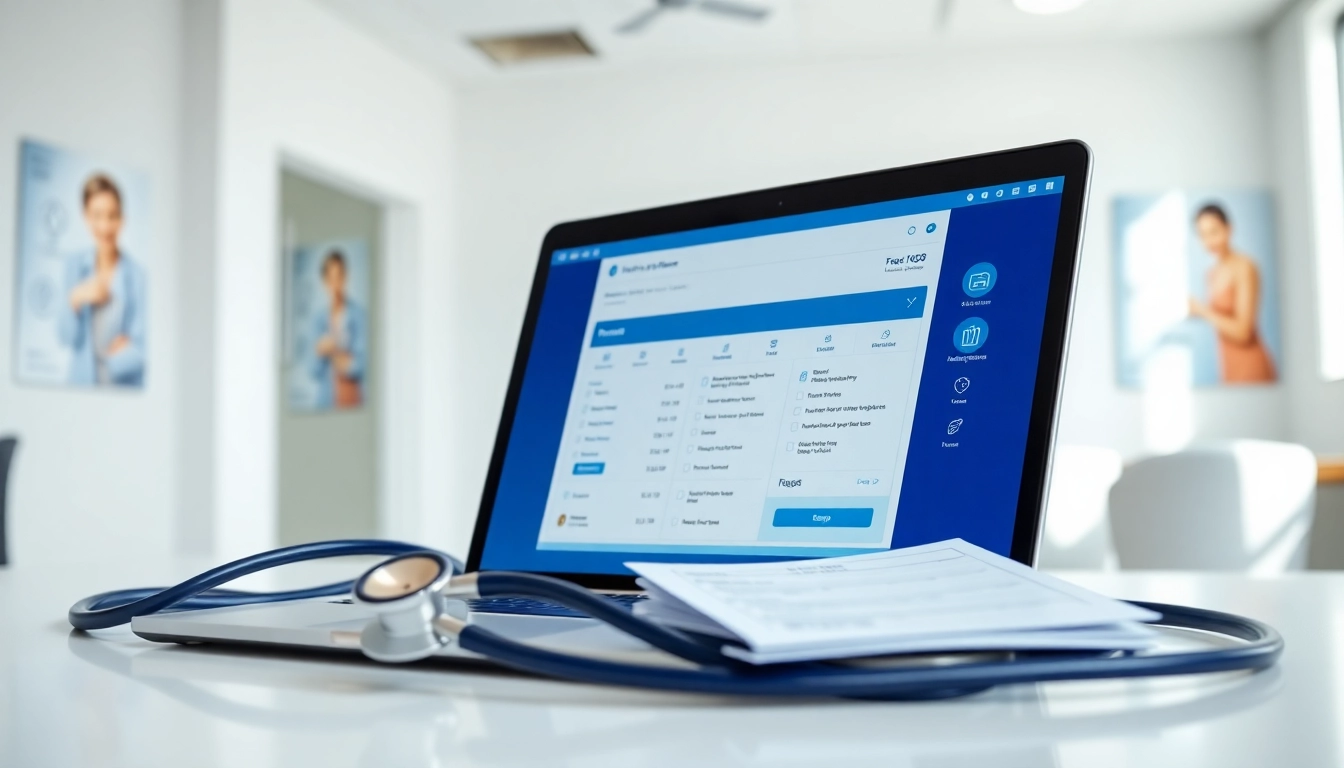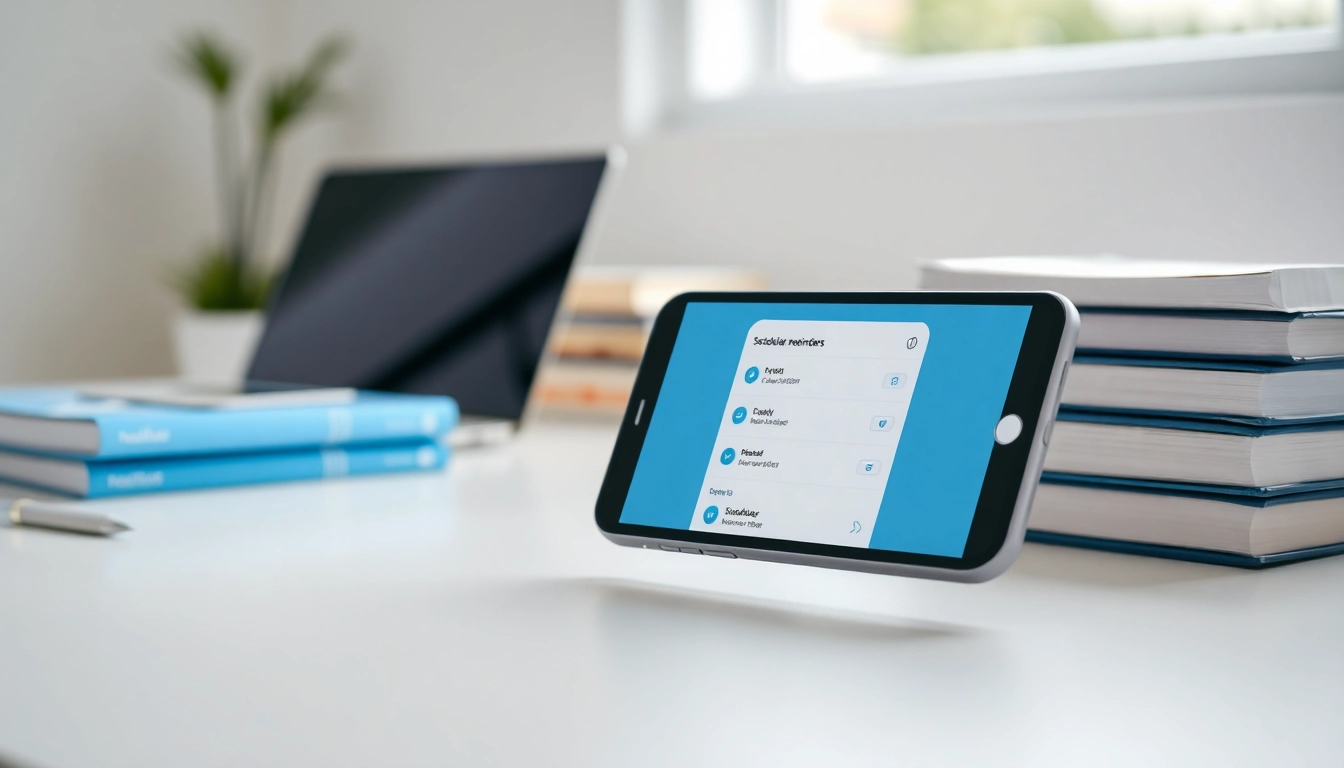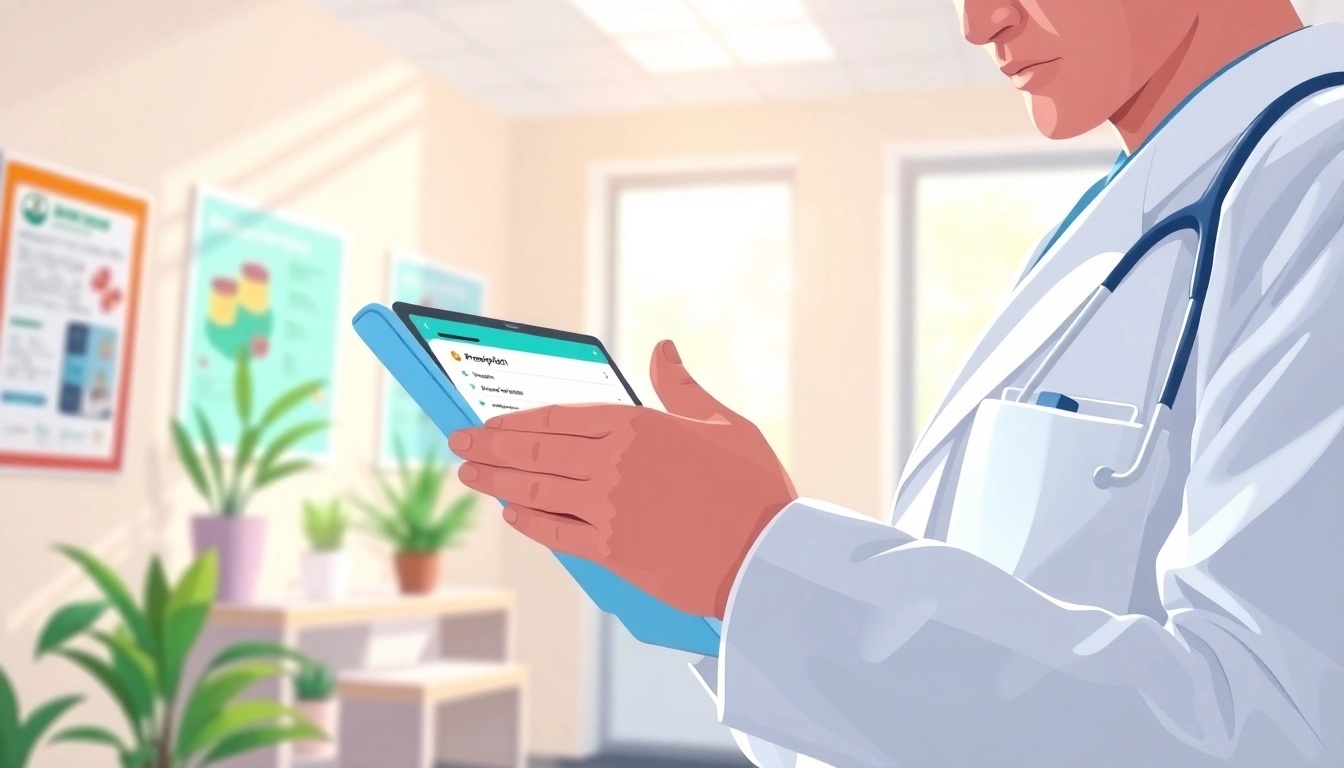Introduction to Top Rated Prescription Applications
As the healthcare landscape continues to evolve, the integration of technology into prescription management has become increasingly vital. Among the most promising advancements are top rated prescription applications, which are transforming how healthcare providers and patients interact regarding medication management. These apps are designed to streamline the prescribing process, improve communication, and enhance patient compliance, ultimately fostering a more efficient healthcare system.
Defining Prescription Applications and Their Importance
Prescription applications are software solutions that assist healthcare professionals in managing and delivering prescriptions. They serve several critical functions, including enabling physicians to write and send prescriptions digitally, tracking patient medication history, and facilitating communication between healthcare providers and pharmacies. The importance of these applications cannot be overstated, as they help mitigate common issues associated with traditional paper-based systems, such as prescription errors, delays in communication, and medication non-adherence.
Benefits of Utilizing Technology in Healthcare
The integration of technology into healthcare brings numerous advantages. First and foremost, it enhances the accuracy of prescribing medications. Digital applications minimize human error by providing healthcare professionals with access to up-to-date drug information, interaction alerts, and patient-specific factors such as allergies and past medications. This results in safer prescribing and reduced adverse drug events.
Moreover, technology improves patient engagement and satisfaction. Patients can more easily access their prescriptions, receive reminders for refills, and gain information about their medications. This proactive approach leads to better adherence to treatment regimens and improved health outcomes. Finally, the utilization of technology in healthcare fosters better data management and analytics, allowing for improved clinical decision-making based on real-time patient data.
Overview of Popular Features in Top Rated Prescription Applications
Top rated prescription applications offer a variety of features that cater to the needs of healthcare providers and patients alike. Some key features include:
- Electronic Prescription Sending: The ability to send prescriptions directly to pharmacies from within the application streamlines the process and eliminates delays.
- Medication History Tracking: Patients can view their medication history, including past prescriptions and refill dates, which aids in ongoing health management.
- Drug Interaction Checks: Many applications provide alerts for potential drug interactions, ensuring patient safety by alerting providers of possible adverse effects.
- User-Friendly Interfaces: An intuitive interface allows healthcare professionals to navigate the application easily, reducing the learning curve and increasing adoption rates.
- Patient Communication Tools: Some apps include chat or messaging features, enabling direct communication between providers and patients, enhancing patient engagement and satisfaction.
Key Features of Top Rated Prescription Applications
User-Friendly Interfaces for Healthcare Professionals
A critical aspect of any software solution is its usability. For prescription applications, a user-friendly interface is paramount. Healthcare professionals frequently work in high-pressure environments, and applications that are easy to navigate can reduce stress and enhance workflow efficiency. Features like intuitive menus, quick access buttons, and the ability to customize views based on user preferences can significantly impact how effectively these tools are utilized.
Integration with Patient Management Systems
To provide a seamless workflow for healthcare providers, top rated prescription applications often integrate with existing patient management systems. These integrations allow for a holistic view of patient data, encompassing medical history, allergies, and current medications. By consolidating information into one platform, healthcare providers can make informed prescribing decisions and reduce the risk of medication errors.
Security Features in Prescription Management
Given the sensitive nature of healthcare data, robust security features are essential in prescription applications. Implementing encryption protocols, user authentication, and regular security audits can protect patient information from breaches. Additionally, compliance with healthcare regulations such as HIPAA (Health Insurance Portability and Accountability Act) is crucial. Applications that prioritize data security not only protect patients but also foster trust and confidence among users.
Evaluating Top Rated Prescription Applications
Assessing User Reviews and Recommendations
Understanding how users perceive prescription applications can provide valuable insights for healthcare providers seeking to implement new technologies. User reviews and ratings often highlight practical experiences, from ease of use to customer support quality. Platforms that aggregate these reviews can serve as essential tools for evaluating potential applications. It is crucial to consider both positive feedback and areas for improvement, as this holistic view will help inform decision-making.
Comparative Analysis of Features and Benefits
Conducting a comparative analysis of different prescription applications helps in identifying which features are most beneficial to a healthcare practice. Key factors to consider include:
- Cost: Evaluate upfront costs, subscription fees, and potential savings linked to increased efficiency.
- Features: Identify which applications offer the functionalities that align with specific clinic needs.
- Scalability: Assess how well an application can grow with the practice, accommodating more users or features as necessary.
- Customer Support: A responsive customer support team can help troubleshoot issues quickly, minimizing disruption in practice operations.
Understanding Cost Implications and Budgeting
When considering the implementation of prescription applications, understanding the cost implications is paramount for healthcare providers. Costs can vary widely depending on the application’s features, such as e-prescribing capabilities or drug interaction checks. Effective budgeting involves analyzing not just direct costs, but also potential long-term savings associated with improved workflow efficiency, decreased error rates, and better patient outcomes. Forecasting these expenses and savings can aid healthcare providers in making informed decisions about investing in prescription management technology.
Implementation Best Practices for Healthcare Providers
Step-by-Step Process for Integration
Integrating new prescription applications into a healthcare practice requires a strategic approach. A recommended step-by-step process includes:
- Needs Assessment: Conduct a thorough analysis to determine the specific needs of the practice that the application should address.
- Selection of Application: Based on the needs assessment, select a prescription application that aligns best with the established criteria.
- Implementation Planning: Develop a detailed implementation plan that outlines timelines, responsibilities, and resource allocation.
- Data Migration: Ensure that all relevant data from existing systems is securely migrated to the new application.
- Testing Phase: Run a pilot test of the application with a small group of users to identify any potential issues before full rollout.
- Full Implementation: Once testing is complete and any necessary adjustments have been made, implement the application across the organization.
Training Healthcare Staff on New Applications
Training is crucial to ensure all healthcare staff can efficiently use the new prescription application. This training should be comprehensive yet adaptable to various user experiences. Consider the following strategies:
- Organize hands-on training sessions that allow staff to practice using the application in a controlled environment.
- Develop user manuals and resources that outline common tasks and troubleshooting tips.
- Encourage ongoing education by providing refresher courses and updates as new features are introduced.
- Create a feedback loop where staff can report challenges they encounter, which can be used to improve ongoing training efforts.
Monitoring and Evaluating Application Performance
After implementation, ongoing monitoring and evaluation of the prescription application are critical to ensure optimal performance. This can be achieved by:
- Establishing performance metrics that align with practice goals, such as reduced prescription errors, improved patient adherence, and resource savings.
- Soliciting regular feedback from both patients and healthcare providers to identify areas for improvement.
- Conducting periodic reviews to assess whether the application continues to meet the evolving needs of the practice.
The Future of Prescription Applications in Healthcare
Emerging Trends in Prescription Application Technology
The landscape of prescription applications is continually changing, fueled by advancements in technology. Some emerging trends include:
- Artificial Intelligence: Incorporating AI can aid in personalizing medication management by analyzing patient data and recommending tailored treatment plans.
- Mobile Health (mHealth) Applications: The rise of mobile applications allows healthcare providers to access prescription tools on-the-go, enhancing flexibility and accessibility.
- Blockchain Technology: Utilizing blockchain for secure prescription transactions can enhance security and traceability, ensuring that sensitive patient data is safeguarded.
Impact of Telemedicine on Prescription Applications
Telemedicine has fundamentally altered the prescription management landscape. With an increase in virtual consultations, the demand for efficient prescription applications has skyrocketed. These applications must now support telehealth functionalities, enabling providers to write and send prescriptions seamlessly during virtual appointments. Additionally, integrating telemedicine capabilities with prescription applications allows for better continuity of care, as patients can receive real-time feedback and adjustments to their medications during consultations.
Preparing for Regulatory Changes and Compliance
Healthcare providers must remain vigilant regarding evolving regulations impacting prescription applications. Staying informed about legislative changes, particularly in relation to telehealth and drug prescriptions, is essential. Implementing compliance protocols and training staff to understand regulatory requirements ensures that healthcare practices can adapt as laws change, thereby minimizing risk while maximizing the effectiveness of prescription applications.



